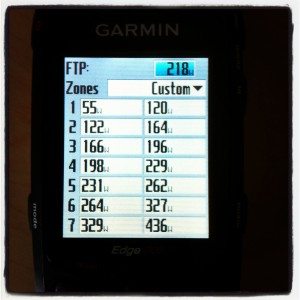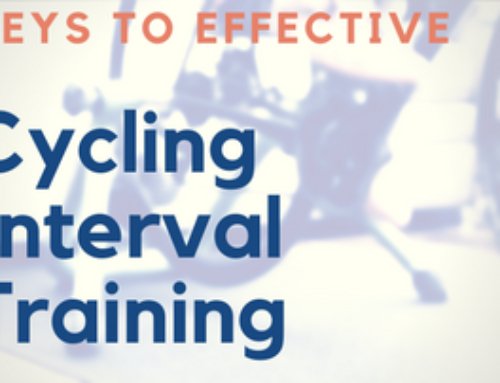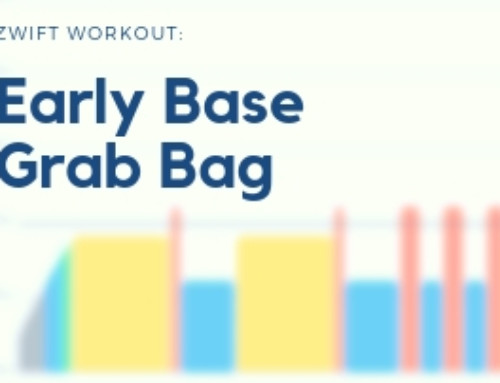If you missed the first part of the Beginner's Guide to Training With Power series of articles, it would be a good idea to go back and read it. Go ahead, I'll wait…
Done reading? Good. You should have a good idea about FTP, W/Kg, Training Levels/zones and more. Now, let's take a look at some more power-based metrics, specifically power training zones. You may recall the definition from my last article:
Power Training Levels/Zones: Along with FTP, these dictate (roughly) the energy systems used at certain power levels and allow a rider to train specific systems to get specific gains. These may be described as “zones” or “levels” interchangeably.
We'll discuss what each zone is, what energy systems it uses and how long it is sustainable below:
 Power Training Levels/Zones
Power Training Levels/Zones
Knowing your Functional Threshold Power is the key to being able to define power training zones. If we know what a 100% sustainable effort is, we will be able to train based upon that metric. That being said, power training zones (as researched and defined by Andy Coggan) are outlined below.
- Zone 1: up to 55% of FTP: This pace could theoretically be sustained indefinitely. It is often considered to be “recovery” pace.
- Zone 2: 56-75% of FTP: Typically referred to as “endurance” pace, this is a slightly tougher pace than recovery. It is theoretically sustainable for several weeks, but this is an arbitrary value. Assuming the rider is properly fueled, this power training level offers little taxation on the body and they can go for extremely long periods of time.
- Zone 3: 76-94% of FTP: Tempo pace. The upper range of Zone 3 is also considered the “sweet spot” of Sweet Spot Training fame. Most of our training actually occurs here, especially in group rides, crits, mountain bike races, road races, etc. Professional road racers can typically ride up to 7 hours at Zone 3. For most amateurs, the upper limit is around 3-4 hours of time in Zone 3.
- Zone 4: 95-105% of FTP: Functional threshold power. FTP. Threshold. Lactate Threshold. Aerobic Threshold. Whatever you wish to call it, it is the mark of your capacity as a cyclist. It is sustainable up to around 60 minutes.
- Zone 5: 106-120% of FTP: Zone 5 represents your VO2 max system. Your VO2 max is reached when workload continues to increase while oxygen consumption plateaus. Oxygen is being used but the demands for energy outstrip the cardiovascular system's ability to provide it and the mitochondria to process it. This metric is typically genetically based, but is highly trainable, and the easiest way to increase VO2 max is to decrease body weight (which reduces the amount of tissue that needs to utilize energy.)
- Zone 6: 121-150% of FTP: At this point, the body is exceeding both FTP and VO2 max. It begins using its Anaerobic Capacity. This is a condition in which the body produces energy without utilizing aerobic (oxygen dependent) pathways. Glucose/glycogen stores are the primary fuel and lactate is the primary byproduct. The fuel can not be replenished fast enough and the waste products can't be cleared quickly enough, so performance in this zone is limited to about 3 minutes at best.
- Zone 7: 150+% of FTP: Neuromuscular Power. This is the absolute hardest, biggest effort you can give, and typically lasts about 20 seconds to a minute at maximum. Neuromuscular force and creatine phosphate play a role in this pathway, making it extremely short lived.
Training with power zones in the real world
It's important to note that these power levels represent real world capabilities, which means that the durations above are not hard and fast rules. Certainly, there are times when athletes can push beyond the normal ranges due to various motivations, ability to suffer etc. Some athletes excel in different areas more than others through genetic variance alone. Some are able to train their weaknesses to match their strengths. Sometimes, though, it is simply not worth battling to build one skill if you have little to no genetic talent for it. You may simply try to minimize the depth of your weakness in that particular area.
It's also important to note that there is no absolute delineation between power systems. As you surpass the effort of FTP and cross into VO2 max, remember that it's not like flipping a switch. FTP and VO2 max zones blend into each other as you move up the scale. All these systems work synergistically in assisting each other, which means that training one often has an effect on another. For example, training VO2max will increase FTP. Increasing FTP will increase Tempo output. And so on and so forth.
Programming workouts based on zones is one of the keys to building a successful training plan. Training with power affords you the ability to customize your training. You can get incredibly specific in your training plans which is a major benefit of training with power versus heart rate.
This is especially true as you start training above your functional threshold power. Power is absolutely quantifiable and infinitely numerable. By that I mean you don't have a “maximum” power that your device can measure (for the most part.) But your heart rate will not go above a genetic maximum no matter how hard you push it. This makes training high intensities with heart rate difficult.
Now that we have a concept of power training levels, the question becomes how do you know which of those metrics are you gifted in and which do you need to train? We'll examine that in the power profile and fatigue resistance profile next time, in part 3 of the Beginner's Guide to Training With Power.






[…] here to read the rest: Coaching: Beginner's Guide to Power (part 2) | The Daily Grind … Author: catheylrangel3 on July 27, 2012 Category: Guide Tags: a-good-idea, back-and, good-idea, […]
[…] Part 2 […]